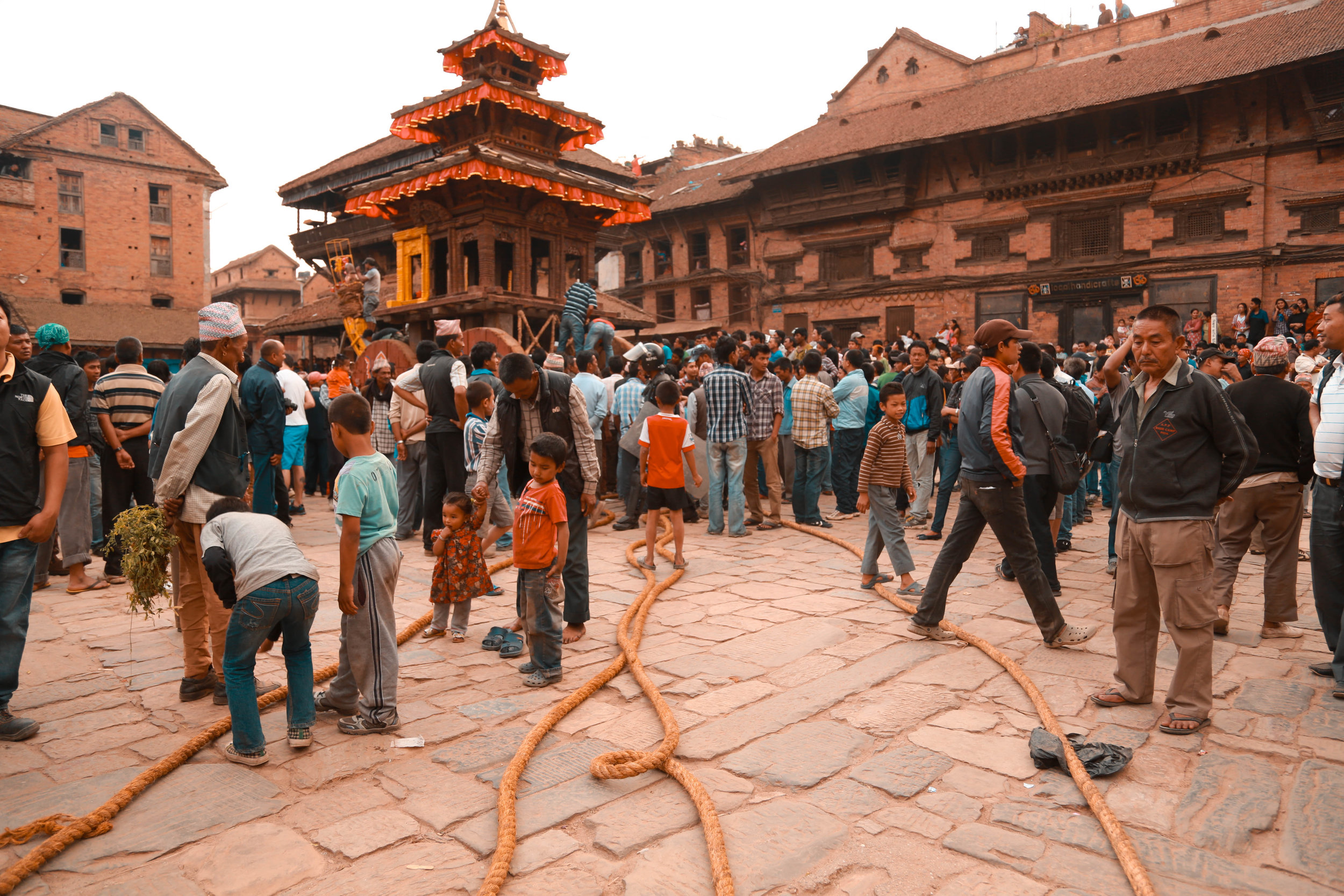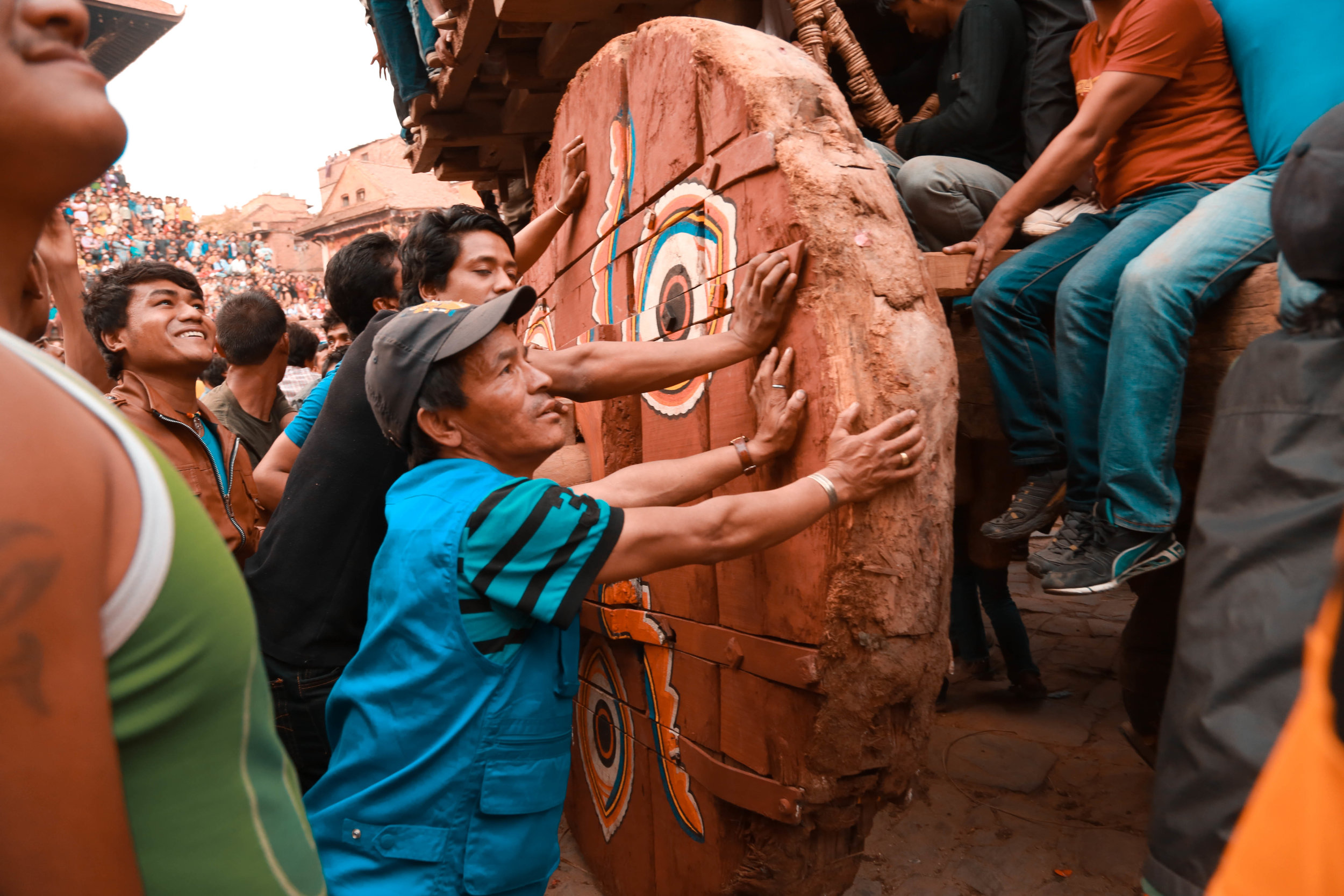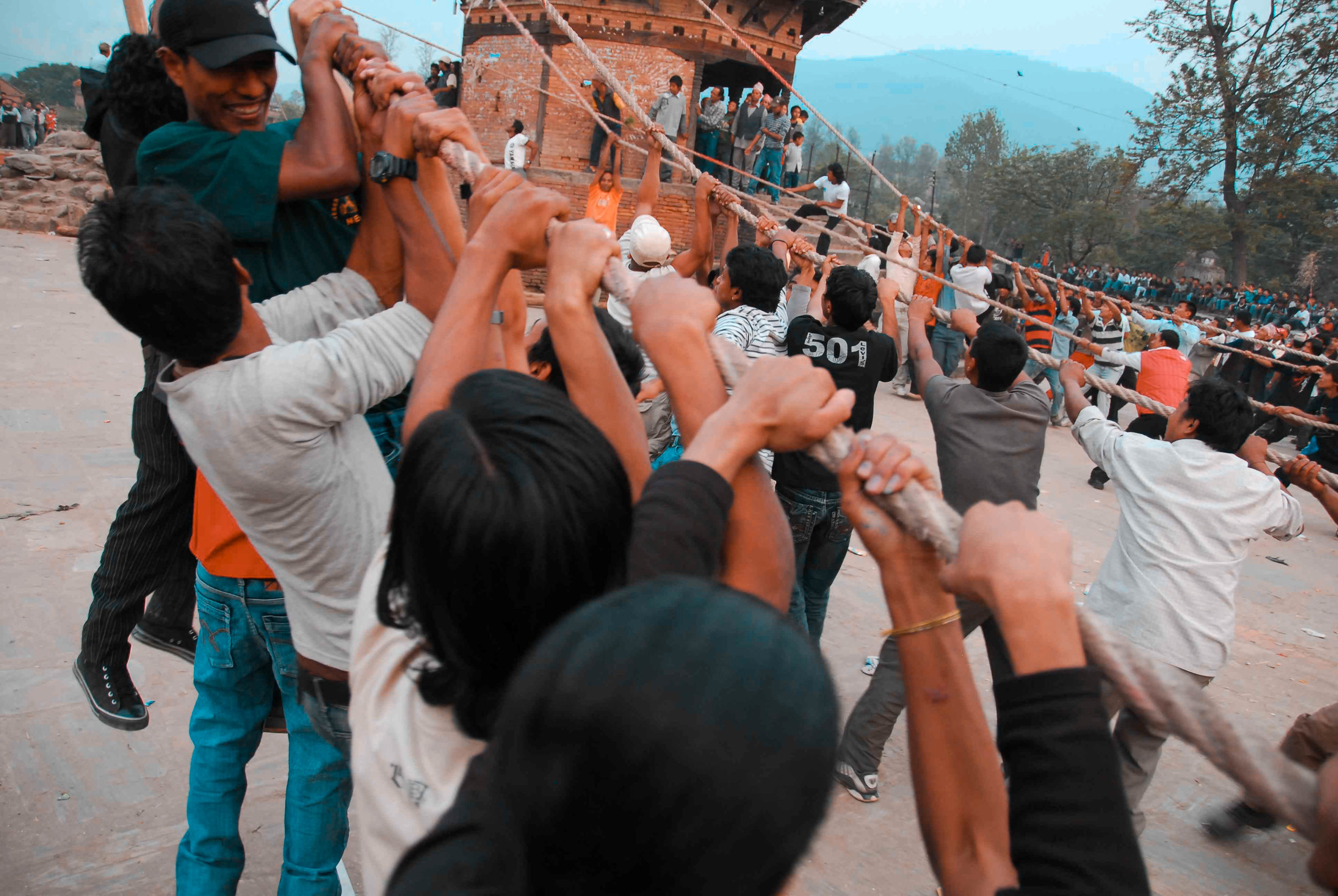The Newari eventuality : Bisket Jatra a.k.a Nepalese New Year 2074
Photo by - Gerd Kholmus
Join Namas, Nepal and the proud Newari’s in Bhatkapur Durbar Square celebrate the new year, Bisket Jatra. Bhaktapur’s population congregates mid-April, just 14 mins away from Nepal’s chaotically organized temple capital. For these four days, Bhaktapur Durbar Square commences to become a regurgitating (albeit small scale) epicenter of showmanship in a battle of strength between the east-side and the west side. It is emblematic of the victory over good and evil, which alongside the journey taken by the god Bhairab in his chariot (roth) is played, a re-enactment of the devoted production presented by the locals every year. During Bisket Jatra one sees it is no wonder Bhaktapur was once known as the ‘City of Devotees’.
The chariots drawn through the streets rests at certain time-honored places in the city, people coming out to throw offerings of rice, coins and red sindur powder. A huge 25m-high lingam (phallic symbol) is erected in the stone yoni (female genital symbol) base. Their union the eternal process of creation and regeneration, the union of male and female principles, and all existence. It is now ready to be theatrically decimated; the pole crash-landing down signifying the beginning of the new advent calendar.
A new year is welcomed.
Happy Nepalese new year from the Namas Team.
Written by- Shanti Rai
Photos by : Romancing the planet
The persistence of festivals; Dashain and Tihar
I don't think most of us truly understand what we are celebrating when we participate in festivals. Perhaps our parents generation do, but as for us post war; post globalization; post secular kids (young adults ahum), the meaning escapes us, or rather the desire to familiarize ourselves with the time-old stories; histories and traditions about gods and deities; good and evil, and the myriad sacrifices made by mankind hold less appeal.
Rather, the twenty-first century heralds a time where despite growing economies and vast technological and scientific advancements, the future in which we can envision ourselves securely paying a mortgage, let alone buying a house, is one that is becoming more vulnerable day by day. Therefore, yes Dashain has arrived and Tihar is around the corner, but who has time to appreciate the challenges faced by Ram and Sita, when we have our own challenges to face? Nor acknowledge the sacrifices they made and the demons they vanquished, when again, we have our own sacrifices to make and our own demons to vanquish?
Today most of us partake in popular festivals like Dashain and Tihar simply because we have to. It's a family thing; it's expected; one cannot displease one's parents throughout the entire year (certainly not Nepalese parents). If you are still young, then even better, you simply have to turn up to receive gifts, money and blessings. The array of food is also worth the journey from one relatives' house to another.
But it cannot only be habit and obligation that has kept the spirit of festival and tradition alive to this day. No. Strip festivals down to their barest essence and you will realise that there is only one simple reason for their outstanding longevity: because festivals bring people together.
In our fast-paced and often far flung existences, sustaining old and new relationships can be challenging. The internet has of course made it extremely easy for families, friends and acquaintances to stay connected. But it is festivals, especially family and community oriented festivals like Dashain and Tihar, that allow people to wholeheartedly indulge in rekindling; reuniting; and rediscovering lost or faded bonds. Festivals recognise the value of family, community and friendship and it is these values that the contemporary individual respects when sitting down to receive Tika from their elders.
Of course there are amongst the myriad, many contemporary Nepalese who are very knowledgeable in their understanding of Dashain and Tihar. There are also many rituals even the less knowledgeable perform almost as second nature: bhai tika is the one that is acted mostly by the children (with a few guidance by the parents). However, what this post is trying to address is the fact that understanding matters little when participating in festivals. Festivals are special and worthy of celebration, not because of their rich contexts and history; gods and dieties and traditional orthodox customs, but rather because they remind us to love and appreciate the people who have all contributed to create the individual we are today – regardless of what the future holds.
So make time. CELEBRATE and APPRECIATE. Dashain has come to an end but Tihar is just around the corner. If you did not have time to reconnect with your loved ones during Dashain, then I hope you do so during Tihar. But festivals are only reminders. Everyday is a good day to tell someone how much you appreciate them!
Therefore, from the entire Namas family “HAPPY DASHAIN AND TIHAR”! Let us today celebrate LIFE!
Written by Dina Rai

















